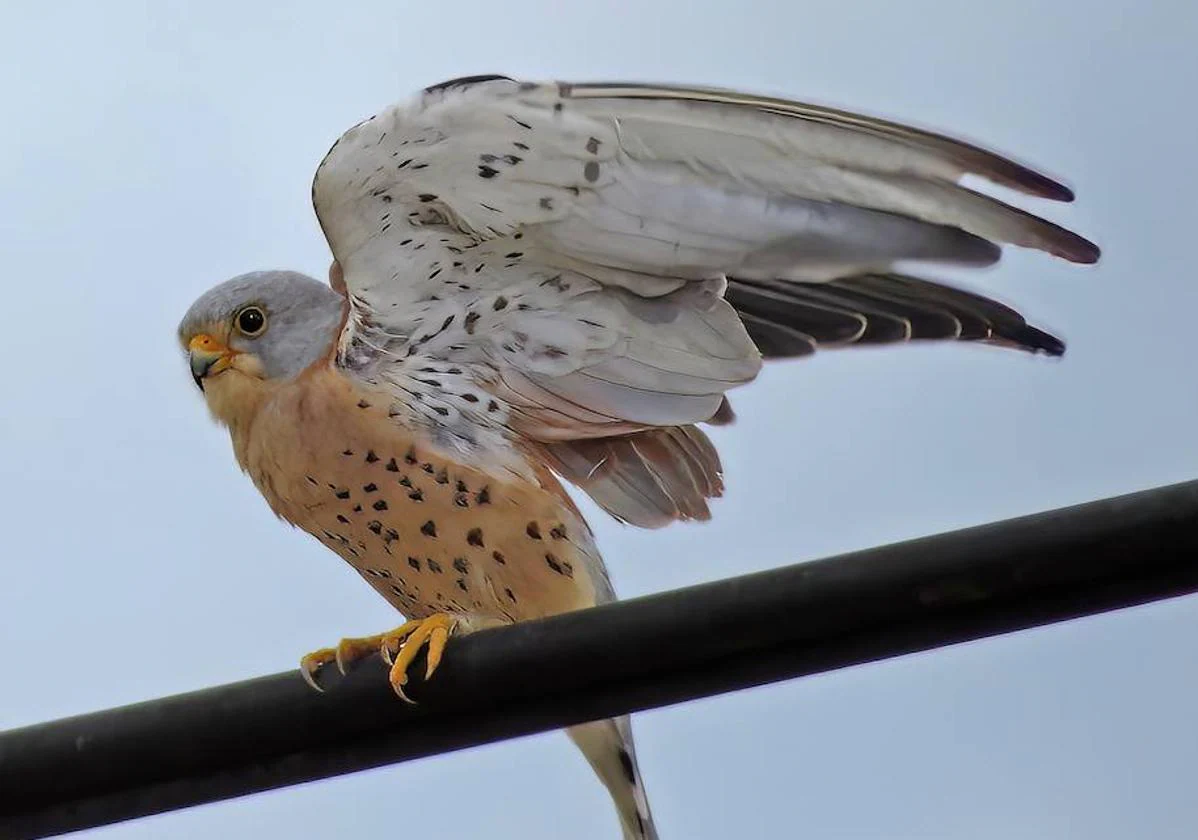The lesser kestrel
The Andalucía Bird Society recommends looking out for Falco naumanni this month
Peter Jones
Ronda
Friday, 2 February 2024, 13:04
It's a typical Andalusían scene, picture it. A white village perched upon a hill, narrow streets leading to the sleepy village square, a table ... in the shade of the ancient church, then above, against that blue sky, one of the ornithological delights of the summer, a flock of lesser kestrels (Falco naumanni).
The lesser kestrel, contrary to popular belief, is not at all closely related to its familiar cousin, the common kestrel, rather it is ancestral to it and many of the other kestrels. Any similarity relies on a degree of Müllerian mimicry, ie., if it looks like a larger or more dangerous species then this similarity will afford it a degree of protection.
The lesser kestrel is a bird of warm climates and is found along the warmer contours of SW Europe and across into Asia. They favour open dry habitats and cultivations and readily take to nesting in monuments and older buildings, particularly those that mimic cliffs with ledges, e.g. churches.
They prey mainly on insects but will also take smaller invertebrates like songbirds and reptiles. The prey is taken either in flight or from the ground and it's not uncommon to see them following agricultural machinery as they take the disturbed animals.
The lesser kestrels are migratory, wintering in similar habitats as to the breeding ones (though a few do remain in Spain). European birds, for the largest part, are trans-Saharan and winter from West Africa through to Senegal, where they form large nomadic flocks moving in search of locusts and grasshoppers. The Iberian populations are mainly found in the Western Sahel.
There had been a sharp decline in this species since the 1950s including both summer and winter territories. However, in recent times, the population decline has stabilised, and it is now classed as being of 'least concern'. Spain holds a particularly significant proportion of the European total, circa 50 per cent.
Here in Andalucía though it is a species to keep an eye on, as loss of suitable breeding sites (old buildings) and changes in agriculture have led to a marked local decline in some areas. There has been some success when providing artificial nests and working with restoration projects of buildings to ensure that old style tiles are used for reroofing.
When seen alone or in pairs outside of their nesting sites they can be difficult to split from the common kestrel.
¿Tienes una suscripción? Inicia sesión
